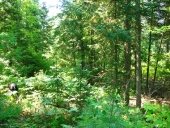This is my first ever post on Permies.com
The situation with an apple tree has baffled me for over a year.
I already know that there could be many variables with my situation here. That's why I'm reaching out to the community for help. Any and all input is valued and appreciated!
So, I'm already familiar that there is a multitude of various ways to plant a fruit tree, let alone any tree in general. Also, we have other apple trees, stone fruit, nut, nitrogen fixer, etc trees that have successfully been planted and have all been thriving.
I live in zone 6a/b
The topic at hand is a granny smith apple tree that was grafted onto a standard/full size rootstock. This was not the first apple tree that I've planted, but it's only grown probably 10 inches in the past two years. It grew a main leader last year. This year it grew some wimpy short branches.
The tree was purchased bare root and dormant. It came out of dormancy just fine. The initial size of the tree (minus roots) was probably 2.5 feet or so.
One observation that I had noticed is that the leaves displayed a nutrient deficiency. I've narrowed it down to probably nitrogen deficient....possibly magnesium deficient. The tree has been watered appropriately in times of no precipitation etc. Mulched too. No turf grass nearby the tree. Protected from deer.
But, before I knew better, it was planted appropriately 12 feet away from where a bitter nut hickory once stood. I don't know if the juglone is enough to affect the tree this much. The hickory trunk diameter was appropriately 12 inches. The hickory tree stood probably 50 feet tall.
One more note....a Jonathan apple tree is planted (and thriving) a similar distance away from where the hickory once stood.
I have several ideas on my course of action. But I'd like some input before I make the ultimate decision.
Option A-- Leave the tree as is and see how it gets on next year
Option B-- Dig a trench between the hickory stump and apple tree and try to remove hickory roots leading to the apple tree. Then back fill the trench with existing soil.
Option C-- Gently ecavate (by hand) around the root system of the apple tree to give the roots a 'checkup'. Possibly add some higher nitrogen and other organic material closer to the roots.
Option D- Dig up tree before spring, and plant elsewhere
Option E-

?? Please help with input
I'm really baffled with what's going on with last this one apple tree. Zone 6 A/B in missouri is where I live. Closest big city is Saint Louis, Missouri.
Thank you in advance for your help




